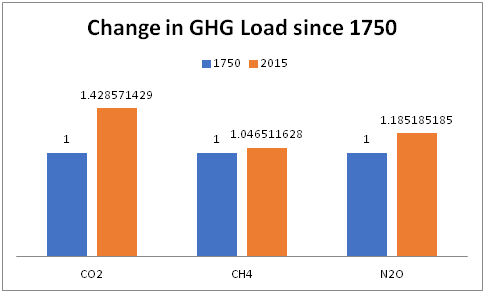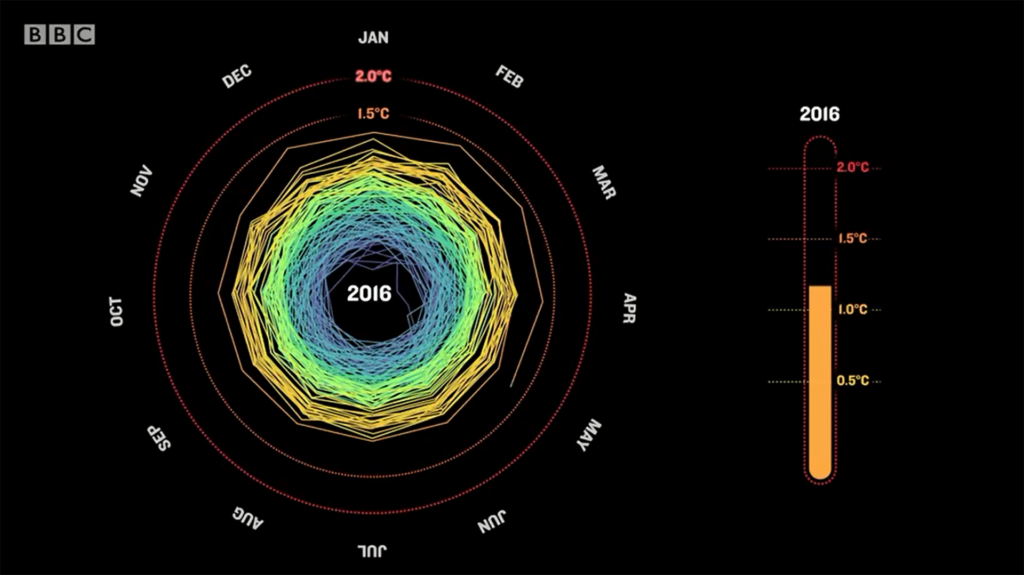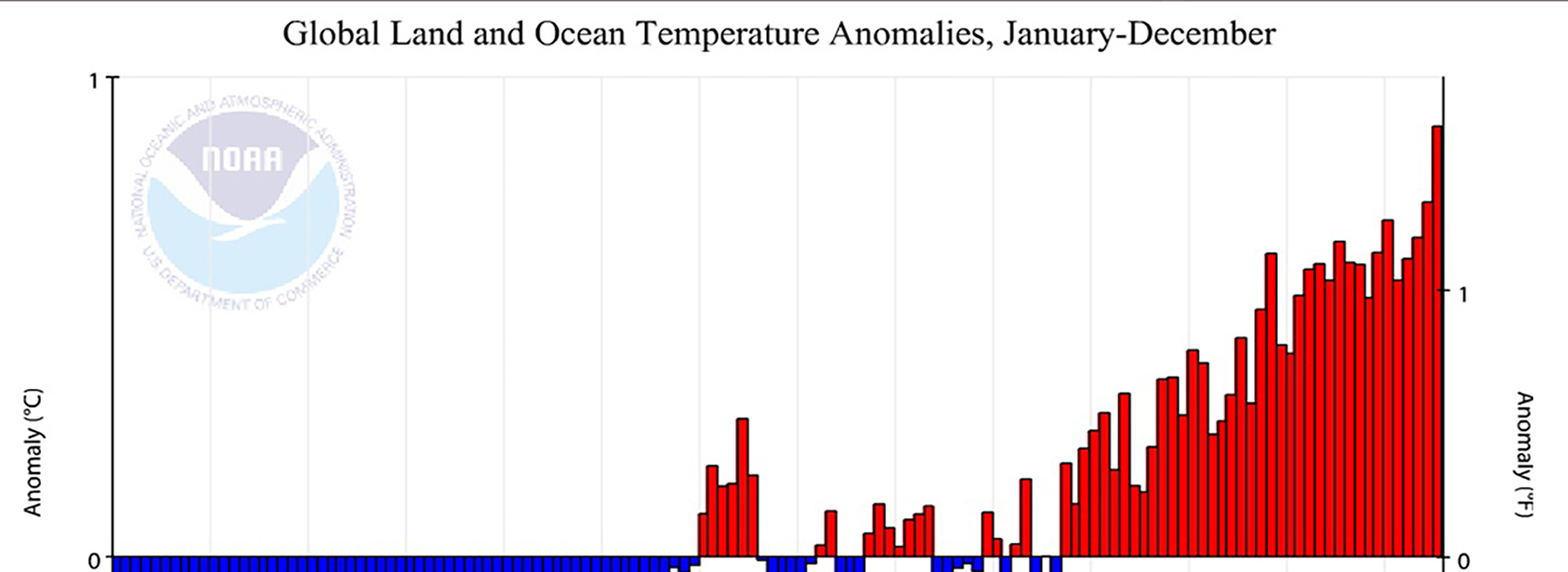Human industry has drastically altered the GHG (greenhouse gas) profile of Earth’s atmosphere – primarily through the burning of fossil fuels, secondarily through agriculture, and tertiarily through positive feedbacks of the Earth system to these inputs. Compared to the year 1750, atmospheric CO2 is up 40%, CH4 (methane) is up 150%, N2O (nitrous oxide) is up 20%, and in addition we have added novel and potent fluorinated GHG’s as well. The input rate of these gases has generally been increasing in response to economic and population drivers (e.g. half of all CO2 emissions since 1750 have occurred within the past 40 years). Here is a summary graphic.

The latest IPCC report supports a 2°C warming “ceiling” above which intolerably dangerous consequences (e.g. famine, ecosystem decoupling, extreme weather events) will occur. While approximate, this ceiling is a useful benchmark, against which we can estimate that humankind has emitted about half of the allowed “budget” of CO2 before the climate response has a greater than 50% likelihood of exceeding this temperature limit. To come in within budget, significant reductions in GHG emission rates are immediately necessary; our actions within the next thirty years will significantly impact Earth’s climate trajectory for perhaps millennia. This is where we stand now:

The trick is achieving those reductions, since GHG emissions are a byproduct of almost every sector of the civilization’s economic engine:

CO2 is intimately tied to energy production (and deforestation); N2O is linked mostly to agriculture; and CH4 straddles both sectors, with an extra foot in waste decomposition. One can achieve slowing net GHG emissions by either reducing emission rates from one or more of the sectors that generates them (e.g. alternative energies), or by increasing the rate at which these GHG’s are removed from the atmosphere (e.g. carbon capture and storage). A third approach is to “geoengineer” using non-carbon technologies to alter the radiation budget of the planet (e.g. cloud seeding). A combination of these efforts is necessary to come within the “safe” range of 450-500 ppmCO2eq, which requires being at least carbon-neutral by 2100.
The Paris Agreement is an effort to keep Earth below the 2 degree limit. Trump and his supporters object to it on the grounds that the sacrifices involved in adhering to it would negatively impact the US’s short-term economic performance. Economy is certainly a variable in the equation, but sacrificing tomorrow on the altar of today is unwise. Cancer does that.
-S
References:
Clais et al. 2013. Carbon and Other Biogeochemical Cycles. IPCC. Accessed online. https://www.ipcc.ch/pdf/assessment-report/ar5/wg1/WG1AR5_Chapter06_FINAL.pdf
Clark, Peter U et al. 2016. Consequences of Twenty-First-Century Policy for Multi-Millennial Climate and Sea-Level Change. Nature Climate Change 2923:1-10.
Shackley, Simon. 2016. Lecture One: Introduction to Climate Change Mitigation. Accessed online. https://www.climate.ed.ac.uk/page/ccm-lecture-01-chapter-01-page-01

